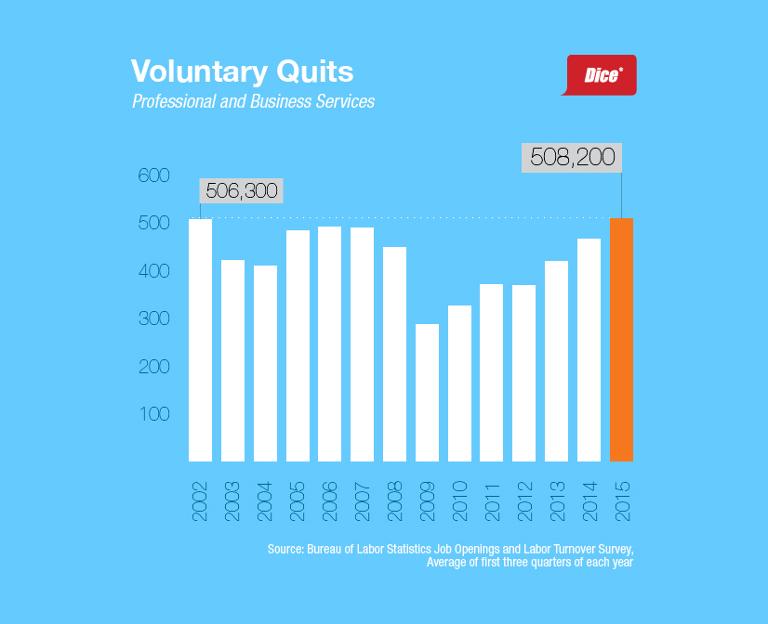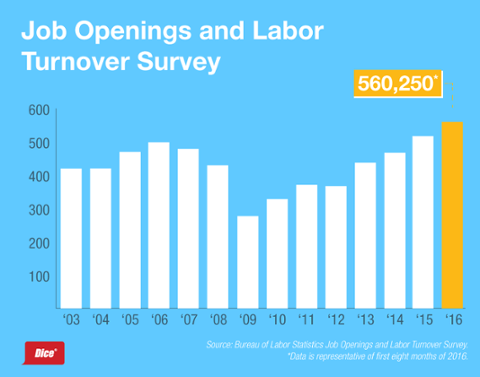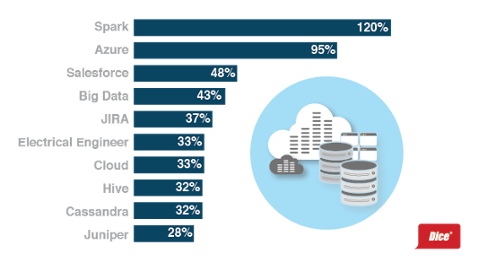Attrition is a costly problem for businesses. When tech professionals leave, the cost of finding, hiring and training team members can deeply impact a business’ bottom line. Attrition has been a top-of-mind problem especially in the tech industry, where the turnover has been rising every year since 2012. According to Dice’s analysis of the latest turnover data from the U.S. Bureau of Labor Statistics, voluntary quits in Professional and Business services continue to trend upwards. Total quits in the category in the first three quarters of 2015 averaged 508,200, the highest since 2002 and a nine percent increase compared to the same period in 2014. Higher turnover means business and tech professionals are more confident in the economy and may have the leverage to leave their current jobs for a better position or higher pay. They may be more open to looking for a new job in cities with better housing and cost of living or with a company that offers greater work/life balance. Dice’s recent survey of over 1,600 U.S.-based tech professionals points to key areas of satisfaction for tech workers, but also key triggers for turnover. Factors which could be driving higher tech turnover include the desire for higher pay (59 percent said they’d move to another city for a higher paying job), and location (50 percent said they’d move to another city for a job without pay being a factor). But while higher turnover shows opportunity and confidence for the professional, it can be a headache for HR managers if strong retention strategies aren’t in place. Understanding the priorities of your tech professionals, whether that be greater work/life balance, flexible working options, or commuter incentives will not only allow you to retain talent, but it will lead to a more engaged, productive, and ultimately profitable technology team.



